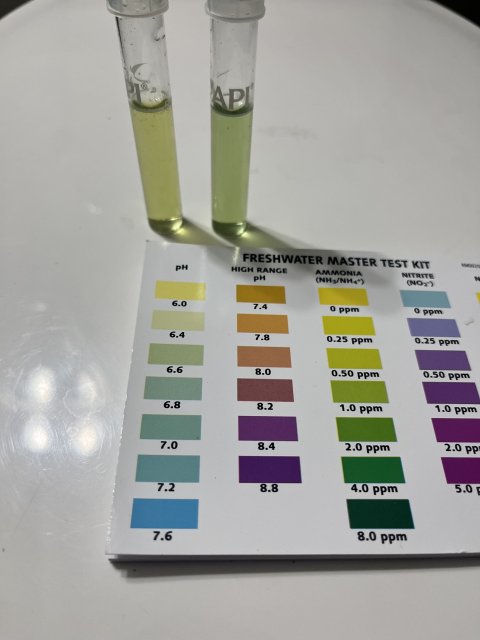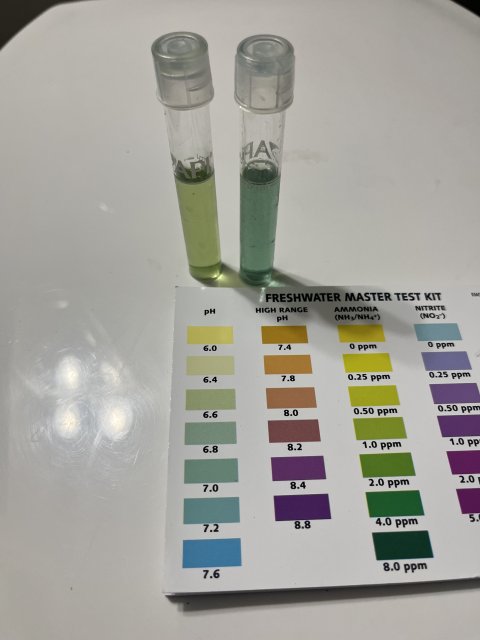Hey Everyone,
So far I have had my tank cycling for almost 3 weeks. Currently I have ammonia around 2-4ppm still, nitrite around 2-5 ppm and I do see slight nitrates. I been following Dr. Tims one and only recipe, originally was using stability, but some members said it wasn't a good idea. I know its a long process usually, but my concern is my PH. I have driftwood in tank, so I assume thats why my PH went down to 6. I have been adding seachem neutral regulator in hopes it would stay at 7, but it would always end up going back down. So now Im at the point is it best to not try to fight keeping PH for cycling or continue adding it until it stabilizes? And if its best to not mess with the PH while cycling, after completed should I just keep it at 6?
So far I have had my tank cycling for almost 3 weeks. Currently I have ammonia around 2-4ppm still, nitrite around 2-5 ppm and I do see slight nitrates. I been following Dr. Tims one and only recipe, originally was using stability, but some members said it wasn't a good idea. I know its a long process usually, but my concern is my PH. I have driftwood in tank, so I assume thats why my PH went down to 6. I have been adding seachem neutral regulator in hopes it would stay at 7, but it would always end up going back down. So now Im at the point is it best to not try to fight keeping PH for cycling or continue adding it until it stabilizes? And if its best to not mess with the PH while cycling, after completed should I just keep it at 6?










